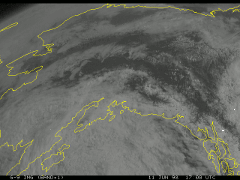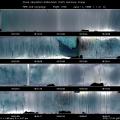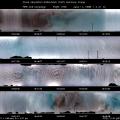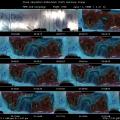1998-06-11 (Flight #1765) |
Aircraft Flight SummaryDate: 1998-06-11 |
Flight Track Map
Larger image (new window) Download KMZ/KML File (right click, save as) |
Satellite ImageImage Unavailable MODIS/Aqua larger image (afternoon) - unavailable |
Satellite Images from goes-09
1700-0230 UTC |
CAR - (QuickLook)
Imagery from CAR Instrument
Click browse image thumbnail to load more detailed version (images open in a new window)
| Flight Direction | Flight Direction |
 |
 |
 |
 |
 |
 |
Flight Mission Details
This flight plan was to fly over the ARM site. The cloud situation was very complex (contrary to expectations), with at least 3 cloud layers. The noise problems seem to have been repeatable, after experimentation during the flight.
Flight Path, Timing, and Measurements
Observed weather at the surface was cool and overcast with stratocumulus cloud. Ascending through the cloud base at 2000 ft revealed a fairly thick cloud layer which seemed a to be a good candidate for diffusion domain measurements. Flight through the cloud revealed that it thinned rapidly. Ascending further several distinct altocumulus layers were identified, further complicating the situation. Further flight over the sea revealed a no less complicated situation. The decision was made to abort the flight and return to base.
On return to Barrow a low pass over the ARM site and surrounding tundra was made.
During this flight we noted that noise reappeared while using the auto-changing filter, despite the fact that the heater was on low. This showed that the heater does not suppress noise, as we had believed. Examining the incidence of noise revealed the conditions under which the noise appears. After several tests of the auto filter channel it appears that the noise spikes appear when one of the channels is indicated as saturated on the screen display, and the filter is changing. The noise spike appears to show up on all channels. This could indicate a problem with the amplifier chip (suggested by Don Spurgeon).

